We are developing an innovative mixed use project in the Sant Adria de Besos area of Barcelona, the project will hose a modular wood building factory with offices and two floors of residential units as well as public green space. The project represents Besos’ transition from an old industrial area into a cutting edge neighborhood at the forefront of Barcelona’s journey toward self-sufficiency.
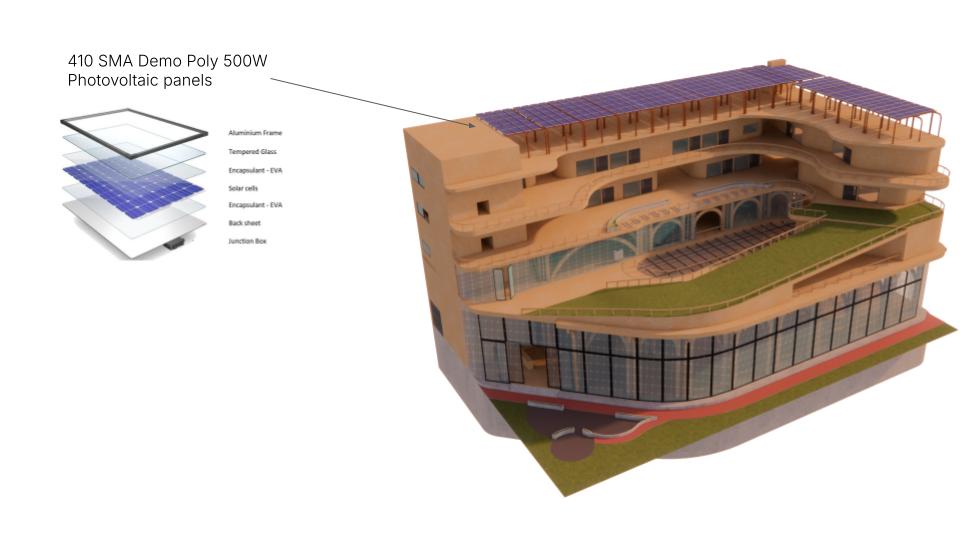
Energy Systems Integration
We have modeled and analyzed a photovoltaic PV system to provide energy to the Timber V4ult project. A high-efficiency PV system is located on the roof and raised on a pergola system to simultaneously provide power generation and a shaded roof terrace. We also analyzed a phase change material system for its capacity to reduce the energy requirements of the HVAC system.
To understand the capacity of our design to generate its own power we calculated our energy and power requirements based on the program and size of the spaces within the project.
Energy and Power requirements
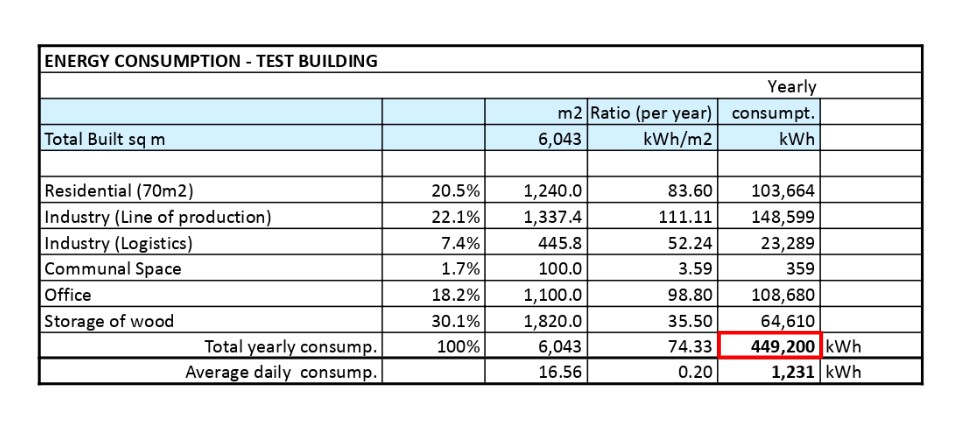
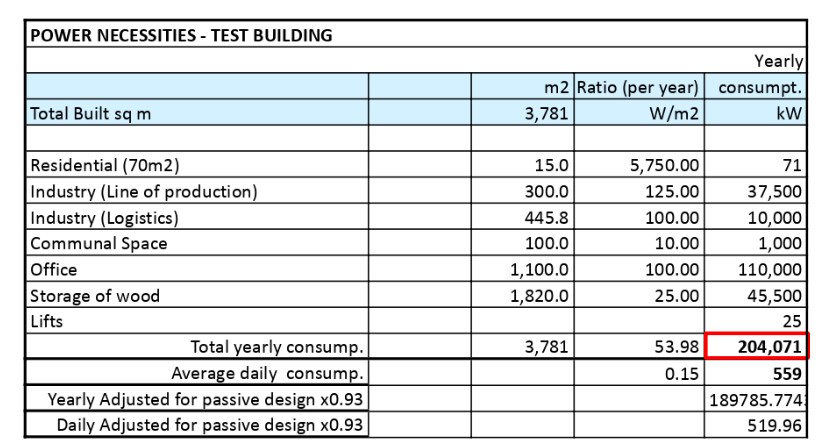
Photovoltaic System
We used the web-platform SunnyDesign to calculate and compare PV solar systems and determine the self-sufficiency and carbon sequestration of the building based on our energy requirements.

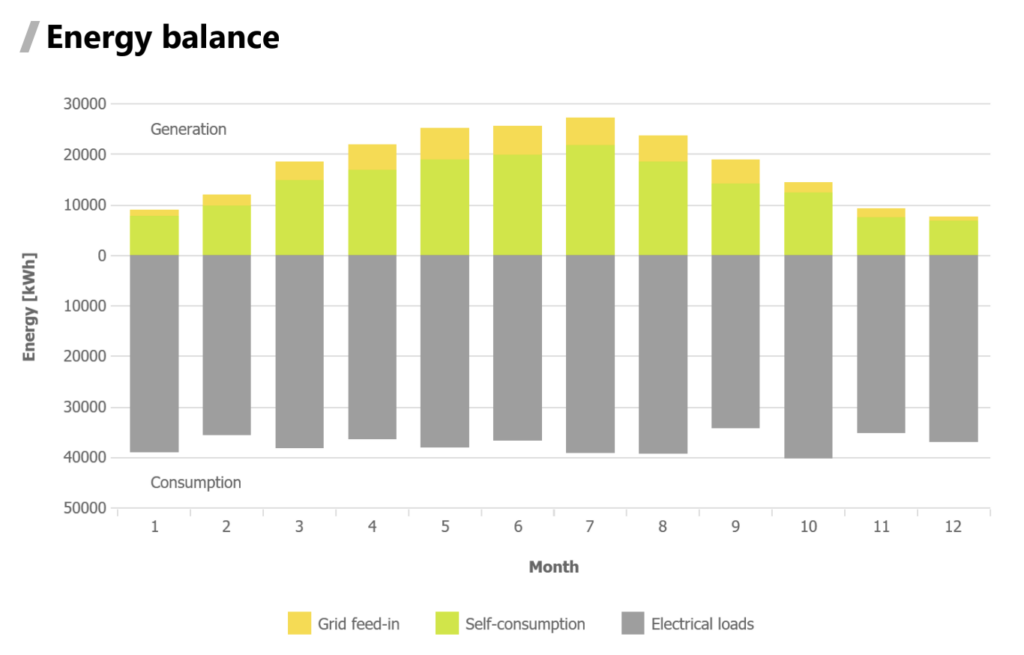
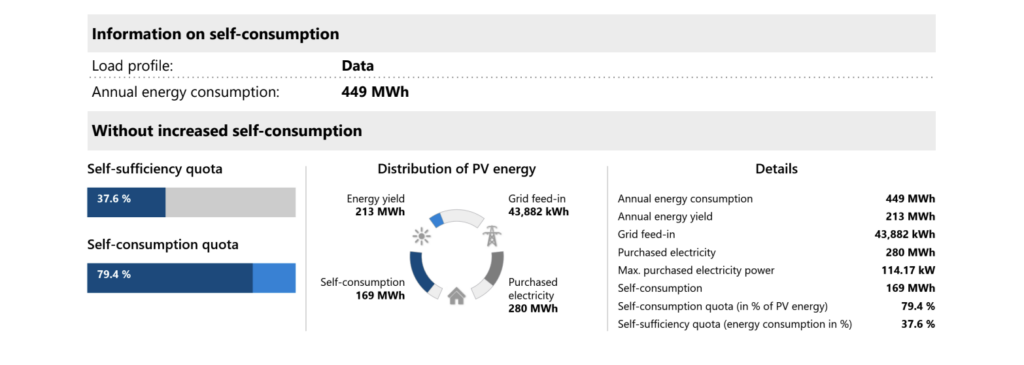
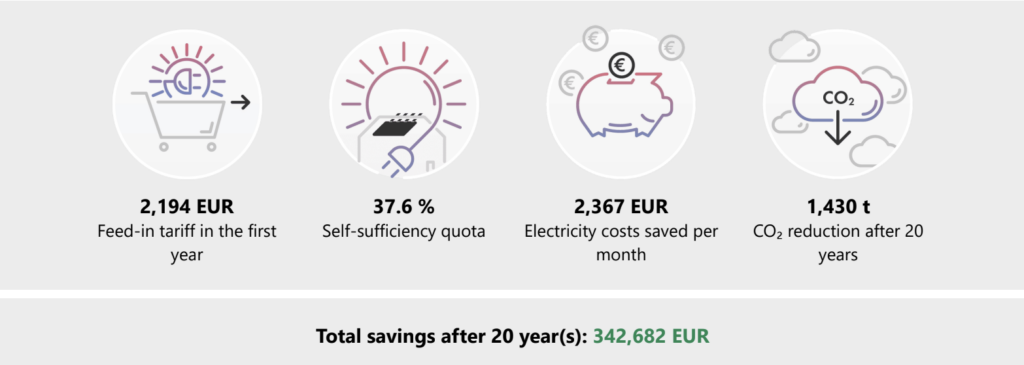
Is PV worth it?
Based on our calculations, including the solar array in our final design is an excellent investment.
PV array design
SunnyDesign allows the designer or engineer to see the layout of the PV arrays on the skin of the building in a simplified geometric form. This helped us understand the spatial requirements of the PV system and how it could integrate with the design.
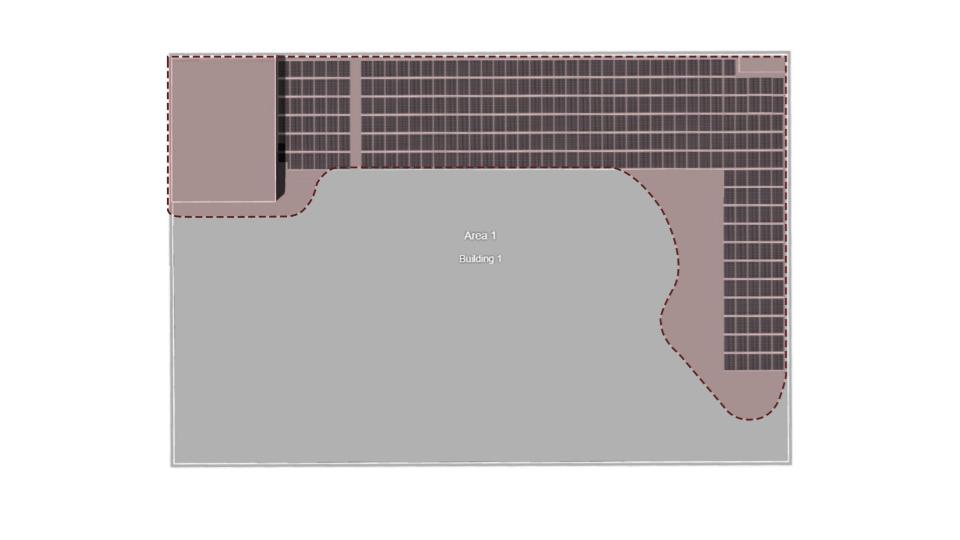
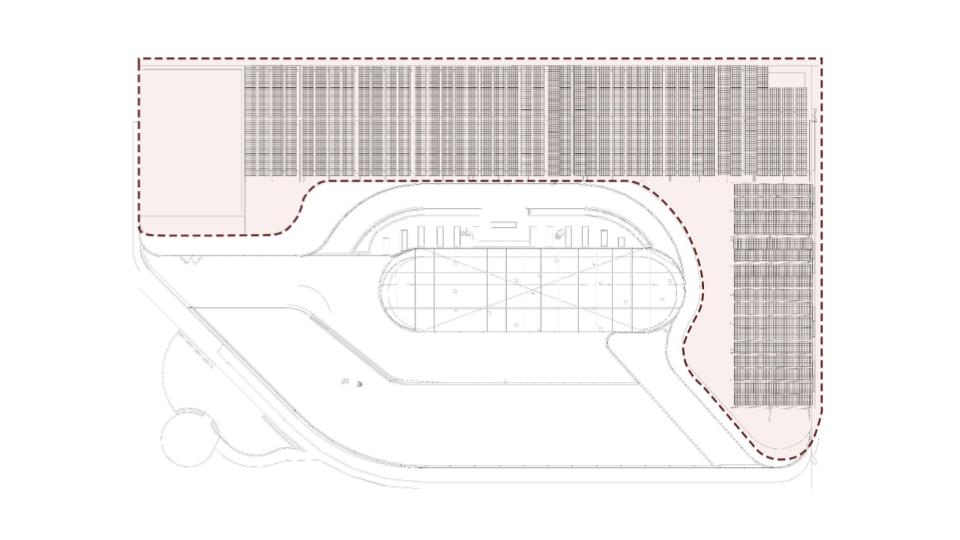
Phase Change Materials (PCM)
Phase Change Materials function like thermal mass. By harnessing the energy of transition this biobased passive system helps stabilize the temperature in the building and reduces both HVAC energy usage and the number of times the HVAC system needs to cycle thus saving energy and carbon emissions, and extending the lifespan of the HVAC system.

Phase Change Material solutions by Phase Change Material Products Limited UK.
Space requirements: 0.5 ceiling space.
Cost: $4k to $5.5K USD per 100m2 of space.
Assuming only 50% coverage of the ceiling area with TubeICE, the design provides approximately 87 kWh (24.7 TR-h) energy storage capacity for 100 m2 (1,000 ft2) space.
Rough numbers for precedent study based on industry reports: ~ 30% reduction on HVAC Cost, ~ 3 years ROI, ~ 150,000 Euro investment, ~ 40,000 kWh load reduction (Phase Change Solutions USA).
Are PCMs worth it:
Based on our research a PCM would be a worthwhile investment.
Integration with Besos District Heating/Cooling System

We will connect with the Sant Adrià de Besòs district heating and cooling system to fulfill the remaining needs of our building.
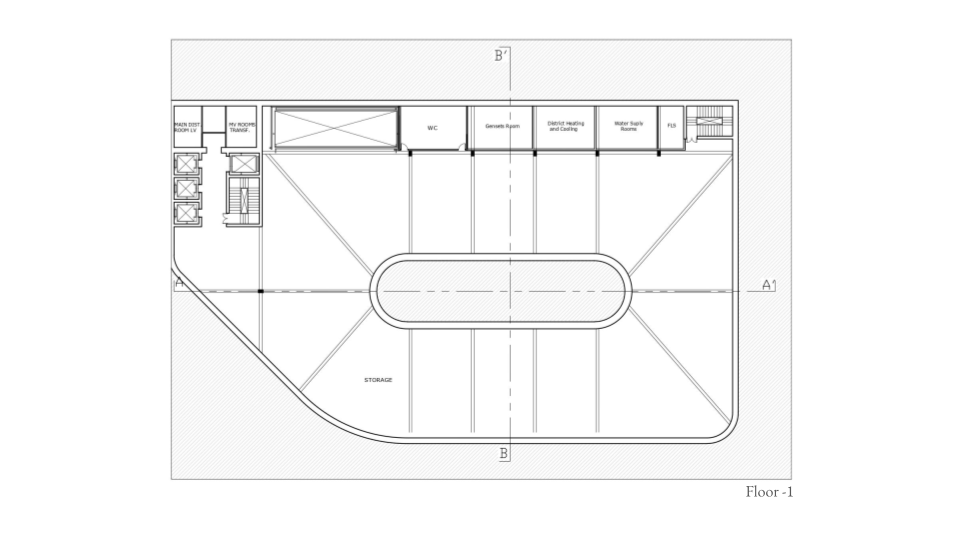
Floor -1 design showing integration of technical spaces that will be required for the electrical and HVAC systems
Comparison of PV and PCM systems
We conducted a financial and carbon analysis of both the PV and PCM systems to determine the financial and environmental value of implementation in our building.
PV System Payback Period
- Investment Cost: 266,220.00 EUR
- Total Savings after 20 years: 342,682 EUR
Total Savings a year: 342,682/20 = 17,134.10 EUR
- Electricity Costs Saved after 20 years: 716,203 EUR
Electricity Costs Saved per year: 716,203/20 = 35,810.15 EUR
Payback Period Calculation:
Payback Period: Cost of Investment/(Annual Cash Flow: Total Savings + Electricity
Costs Saved per year )
Payback Period: 266,220/(17,134.10 + 35,810.15) = 5.04 years
PV Carbon reduction
1,430 t of CO2 reduction after 20 years.
PCM System Payback Period
- Investment Cost: 150,000 EUR
- Annual Cash Flow: Annual Energy Savings X Electricity Cost per kWh
Annual Cash Flow: (Energy Savings = 449,200kWh (Pre-installation consumption) −
408,772 (Post energy savings consumption) kWh) = 40,428 kWh x 0.2436 EUR/kWh
(Spain estimates) = 9,847.80 EUR - Payback Period Calculation: Cost of Investment/Annual Cash Flow
Payback Period: 150,000 EUR/9847.80 EUR = 15.23 years
PCM system carbon reductions
543.75 t of carbon reduction after 20 years.
Conclusion
Both rooftop PV and PCM systems provide significant potential for cost savings and carbon dioxide reduction. We would recommend using both systems in our building.
If, for budget reasons, only one system were to be chosen it should be the PV system because it pays for 3X itself faster and has the potential to offset 2X more carbon emissions compared to the PCM system.
References and resources:
Sunny Design:
https://www.sunnydesignweb.com/sdweb#/Home
Besos District Heating:
http://aaltopro2.aalto.fi/projects/up-res/DHC%20BARCELONA_CHRISTOPH%20PETERS.pdf
Phase Change Materials:
https://www.pcmproducts.net/PCM_Products_Background.htm

